Attachment H- Form 022
2692.02 Attachment H__9600-022- Survey Aware. and Percep. of Labels.docx
EPA’s Safer Choice Program Product and Partner Recognition Activities (Renewal)
Attachment H- Form 022
OMB: 2070-0221
OMB Control No. 2070-0221
Expiration Date 5/31/2025
ATTACHMENT H
Survey to Test Awareness and Perceptions of EPA’s Safer Choice Label and Alternate Labels:
General Adult Population Survey
OMB Control No. 2070-0221
Approval expires 5/31/2025
This collection of information is approved by OMB under the Paperwork Reduction Act, 44 U.S.C. 3501 et seq. (OMB Control No. 2070-0221). Responses to this collection of information are voluntary. An agency may not conduct or sponsor, and a person is not required to respond to, a collection of information unless it displays a currently valid OMB control number. The public reporting and recordkeeping burden for this collection of information is estimated to be 0.5 hours per response. Send comments on the Agency’s need for this information, the accuracy of the provided burden estimates and any suggested methods for minimizing respondent burden to the Information Engagement Division Director, U.S. Environmental Protection Agency (2821T), 1200 Pennsylvania Ave., NW, Washington, D.C. 20460. Include the OMB control number in any correspondence. Do not send the completed form to this address.
Survey for EPA Safer Choice
Awareness and Perceptions of Safer Choice Label and Alternate Labels
General Adult Population Survey
The annual public burden for this collection of information is estimated at 0.5 hours per response. Responses will be private to the extent permitted by law. This is a voluntary collection; respondents do not have to respond if there is no OMB control number. The OMB control number for this collection is 2070-0221 Send comments on the Agency's need for this information, the accuracy of the provided burden estimates, and any suggested methods for minimizing respondent burden, including through the use of automated collection techniques to the Director, Collection Strategies Division, U.S. Environmental Protection Agency (2822T), 1200 Pennsylvania Ave., NW, Washington, D.C. 20460. Include the OMB control number in any correspondence. Do not send the completed application to this address.
The survey below is designed to test awareness and perceptions of the primary Safer Choice label, with options for testing alternate labels. This document contains four modules of questions: general questions on the Safer Choice program and label, supplemental questions on the Fragrance-Free Safer Choice label, general questions on the Design for the Environment (DfE) program and logo, and questions on the DfE logo design. For a given survey, one to three modules of questions will be used, while ensuring that the burden does not exceed 0.5 hours per response.
GENERAL QUESTIONS ON THE SAFER CHOICE PROGRAM AND LABEL
This survey will ask questions about some ecolabels on products that you may have seen while shopping in stores or online.
The first questions are about different ecolabels placed on products that you may have seen or purchased. Some labels may be on more commonly seen products, while others may be on less familiar products.
For the ecolabels shown below, please select which ones you have seen on products in stores or online.
[LABEL GRID WITH FIVE ITEMS, RANDOMIZED ORDER, YES/NO OPTIONS FOR EACH. LABELS DISPLAYED: SAFER CHOICE, ENERGY STAR, WATERSENSE, USDA ORGANIC, USDA BIOPREFERRED]
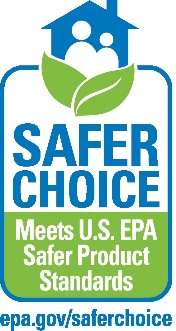
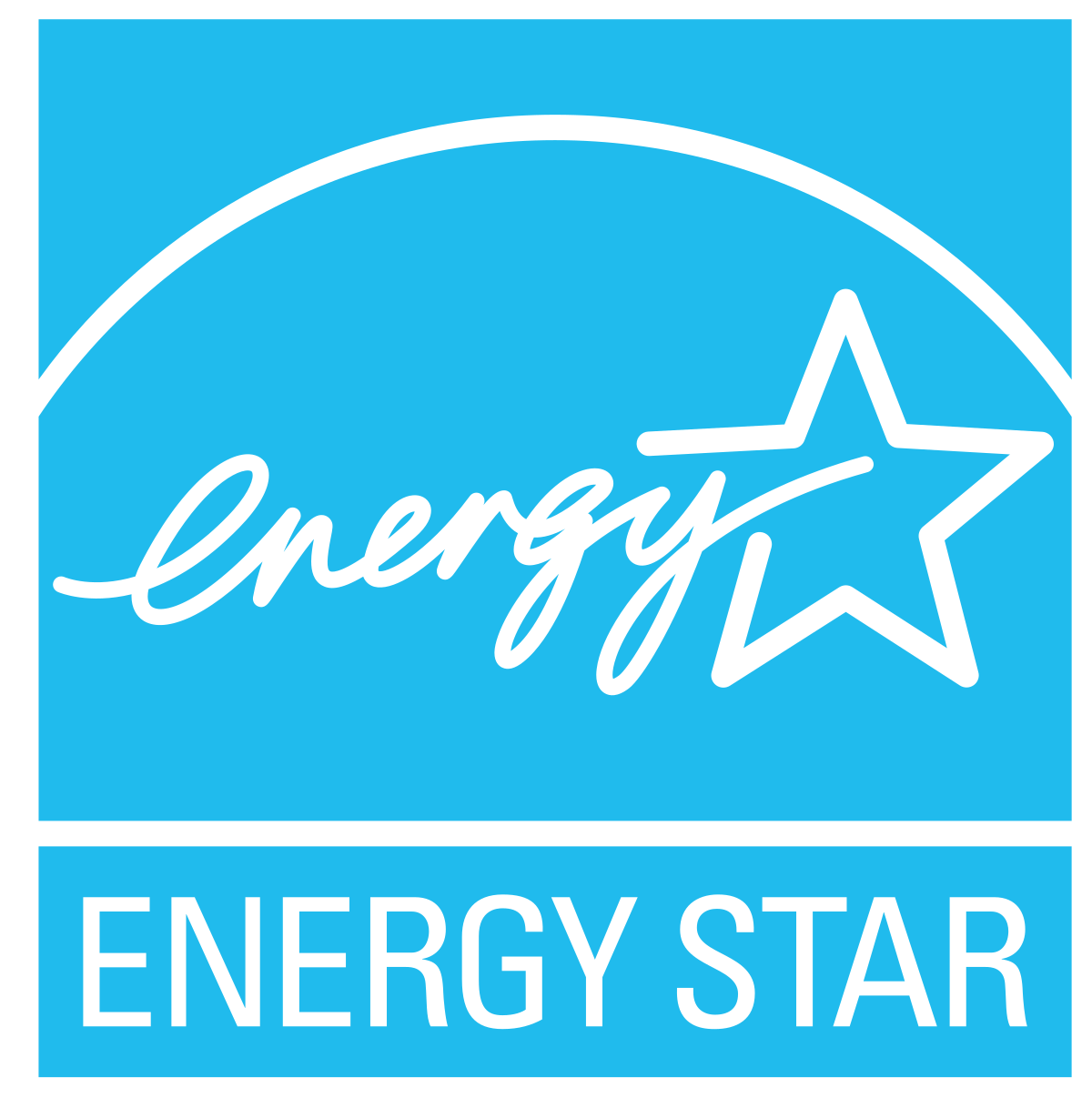


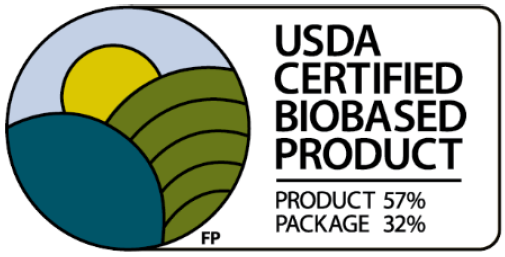
Which of the ecolabels have you seen on products you have purchased?
[LABEL GRID, RANDOMIZED ORDER
FROM Q1, YES/NO OPTIONS FOR EACH]
[IF RESPONDENT SELECTED ‘YES’ TO HAVING SEEN OR PURCHASED PRODUCTS WITH THE SAFER CHOICE LABEL (Q1 OR Q2 = ‘YES’), ASK S1-S2; ELSE SKIP TO Q3]
S1. You mentioned that you had
seen or purchased a product with the below ecolabel: (show
image of label)

What does the Safer Choice label mean to you? [Open-ended]
S2. Here is more information
about the Safer Choice label. For more than 15 years, the U.S.
Environmental Protection Agency (EPA) has implemented the Safer
Choice program – a voluntary certification program that helps
people find cleaning and other products made with safer ingredients
for people, families, pets, and the planet. Only products that meet
EPA’s stringent criteria for human health and the environment
are allowed to carry the Safer Choice label. When you see the Safer
Choice label on a product it means EPA scientists have screened each
ingredient for potential human health and environmental effects and
have determined the product contains only safer ingredients.
Does
the above information match what you thought the Safer Choice label
meant previously?
Yes
No
[ASK IF Q1 AND Q2 = ‘NO’]
Are you familiar with a certification program implemented by the U.S. Environmental Protection Agency (EPA) that helps people find products that have safer ingredients for people, families, pets, and the environment?
Yes
No [SKIP to Q5]
What is the name of the certification program? [Open-ended]
For more than 15 years, the U.S. EPA has implemented the Safer Choice program – a voluntary certification program that helps people find cleaning and other products made with safer ingredients for people, families, pets, and the planet. Only products that meet EPA’s stringent criteria for human health and the environment are allowed to carry the Safer Choice label. When you see the Safer Choice label on a product it means EPA scientists have screened each ingredient for potential human health and environmental effects and have determined the product contains only safer ingredients. (show image of label)

Now that you have heard more about the certification program and label, do you recall hearing or seeing anything about this program or label?
Yes
No
[ASK ALL]
Based on what you now know about the certification program, how likely are you to use the Safer Choice label to help you select a product to purchase?
Extremely likely
Very likely
Somewhat likely
Slightly likely
Not at all likely
What would motivate you to purchase products with this label? Mark all that apply to you.
If it was cost competitive
If it was easy to locate on store shelves or online
If it was higher performance or more effective
If there was scientific information readily available to support claims
If I had a coupon to encourage me to buy the product
If it was proven to use safer ingredients for people, including children
If it was proven to use safer ingredients for pets
If it was proven to use safer ingredients for the environment
I would not purchase products with this label
What reason would most motivate you to purchase products with this label?
[DISPLAY ALL RESPONSES SELECTED IN Q7]
[ASK IF Q1 AND Q2 = ‘NO’]
Where or how could information be shared to make you and other people more aware about the Safer Choice label?
In-store signage highlighting the label
Advertisements
Social media
Print media (e.g., newspapers, magazines)
Other: [Open-ended]
[OPTIONAL QUESTIONS TO APPEND]
Please answer the following questions about the program name and visual design of the Safer Choice label. (show image of label)

On a scale from 1 to 5, where 1 indicates that you “strongly disagree,” and 5 indicates that you “strongly agree,” please indicate how much you agree or disagree with each of the following statements.
|
|
Strongly Disagree 1 |
Somewhat Disagree 2 |
Neutral - don’t agree or disagree 3 |
Somewhat Agree 4 |
Strongly Agree 5 |
1 |
I would notice this label if I saw it on a product or packaging |
|
|
|
|
|
2 |
The label is attractive and appealing |
|
|
|
|
|
3 |
The visual design is effective in showing that the product contains ingredients that are safer for people and families |
|
|
|
|
|
4 |
The visual design is effective in showing that the product contains ingredients that help protect the environment |
|
|
|
|
|
5 |
The name “Safer Choice” is effective in showing that the product contains ingredients that are safer for people and families |
|
|
|
|
|
6 |
The name “Safer Choice” is effective in showing that the product contains ingredients that protect the environment |
|
|
|
|
|
7 |
The tagline “Meets U.S. EPA Safer Product Standards” is credible |
|
|
|
|
|
8 |
This label is a useful resource for shoppers |
|
|
|
|
|
9 |
I would use this label to help me decide which product to buy |
|
|
|
|
|
Have you purchased a product with this label in the past six months?
YES
NO
I don’t know
OPTIONAL ALTERNATE LABEL (E.G., FRAGRANCE FREE) DESIGN QUESTIONS
In addition to the general design, there is a [“fragrance free”] label for products. Please answer the following questions as they relate to the [fragrance free] design.
Fragrance Free Design (or other alternate design)
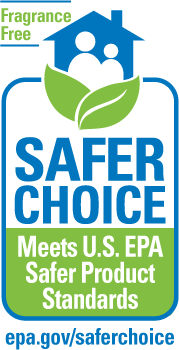
On a scale from 1 to 5, where 1 indicates that you “strongly disagree,” and 5 indicates that you “strongly agree,” please indicate how much you agree or disagree with each of the following statements.
|
|
Strongly Disagree 1 |
Somewhat Disagree 2 |
Neutral - don’t agree or disagree 3 |
Somewhat Agree 4 |
Strongly Agree 5 |
1 |
I prefer to buy [fragrance free] products for my family |
|
|
|
|
|
2 |
I buy [fragrance free] products on a regular basis (at least once a month) |
|
|
|
|
|
3 |
The label is effective in showing that the product is [fragrance free] |
|
|
|
|
|
4 |
I would use this label to help me decide which product to buy |
|
|
|
|
|
GENERAL QUESTIONS ON THE DfE PROGRAM AND LOGO
This survey will ask questions about some ecolabels on products that you may have seen while shopping in stores or online.
The first questions are about different ecolabels placed on products that you may have seen or purchased. Some labels may be on more commonly seen products, while others may be on less familiar products.
For the ecolabels shown below, please select which ones you have seen on products in stores or online.
[LABEL GRID WITH FIVE ITEMS, RANDOMIZED ORDER, YES/NO OPTIONS FOR EACH. LABELS DISPLAYED: DfE, ENERGY STAR, WATERSENSE, USDA ORGANIC, USDA BIOPREFERRED]
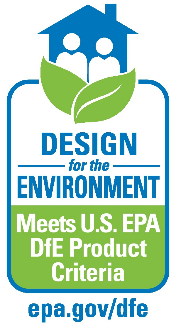




Which of the ecolabels have you seen on products you have purchased?
[LABEL GRID, RANDOMIZED ORDER
FROM Q1, YES/NO OPTIONS FOR EACH]
[IF RESPONDENT SELECTED ‘YES’ TO HAVING SEEN OR PURCHASED PRODUCTS WITH THE DfE LOGO (Q1 OR Q2 = ‘YES’), ASK S1-S2; ELSE SKIP TO Q3]
S1. You mentioned that you had
seen or purchased a product with the below ecolabel: (show
image of logo)
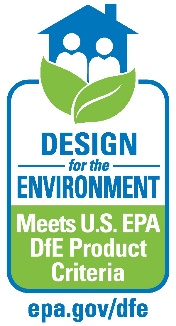
What does the DfE ecolabel mean to you? [Open-ended]
S2. Here is more information
about the DfE ecolabel. The U.S. Environmental Protection Agency
(EPA) administers the “Design for the Environment” (or
“DfE”) program – a voluntary certification program
that helps people find disinfectants with ingredients that meet
stringent criteria for effects on the environment and for the health
of people, families, and pets. Only disinfectants that meet EPA’s
stringent ingredient criteria are allowed to carry the DfE ecolabel.
When you see the DfE ecolabel on a product, it means EPA scientists
have reviewed each ingredient for potential human health and
environmental effects.
Does the above information match
what you thought the DfE ecolabel meant previously?
Yes
No
[ASK IF Q1 AND Q2 = ‘NO’]
Are you familiar with a certification program implemented by the U.S. Environmental Protection Agency (EPA) that helps people find disinfectants and sanitizers with ingredients that meet stringent criteria for human health and environmental effects?
Yes
No [SKIP to Q5]
What is the name of the certification program? [Open-ended]
The U.S. EPA administers the “Design for the Environment” (or “DfE”) program – a voluntary certification program that helps people find disinfectants with ingredients that meet stringent criteria for effects on the environment and for the health of people, families, and pets. Only disinfectants that meet EPA’s stringent ingredient criteria are allowed to carry the DfE ecolabel. When you see the DfE ecolabel on a product, it means EPA scientists have reviewed each ingredient for potential human health and environmental effects. (show image of logo)

Now that you have heard more about the certification program and ecolabel, do you recall hearing or seeing anything about this program or ecolabel?
Yes
No
[ASK ALL]
Based on what you now know about the certification program, how likely are you to use the DfE ecolabel to help you select a product to purchase?
Extremely likely
Very likely
Somewhat likely
Slightly likely
Not at all likely
What would motivate you to purchase products with this ecolabel? Mark all that apply to you.
If it was cost competitive
If it was easy to locate on store shelves or online
If it was higher performance or more effective
If there was scientific information readily available to support claims
If I had a coupon to encourage me to buy the product
If it was proven to meet high standards for human health
If it was proven to meet high standards for environmental health
I would not purchase products with this ecolabel
What reason would most motivate you to purchase products with this ecolabel?
[DISPLAY ALL RESPONSES SELECTED IN Q7]
[ASK IF Q1 AND Q2 = ‘NO’]
Where or how could information be shared to make you and other people more aware about the DfE ecolabel?
In-store signage highlighting the ecolabel
Advertisements
Social media
Print media (e.g., newspapers, magazines)
Other: [Open-ended]
[OPTIONAL QUESTIONS TO APPEND]
Please answer the following questions about the program name and visual design of the DfE ecolabel. (show image of logo)
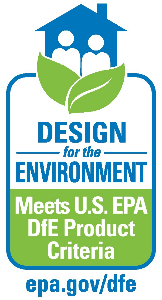
On a scale from 1 to 5, where 1 indicates that you “strongly disagree,” and 5 indicates that you “strongly agree,” please indicate how much you agree or disagree with each of the following statements.
|
|
Strongly Disagree 1 |
Somewhat Disagree 2 |
Neutral - don’t agree or disagree 3 |
Somewhat Agree 4 |
Strongly Agree 5 |
1 |
I would notice this ecolabel if I saw it on a product or packaging |
|
|
|
|
|
2 |
The ecolabel is attractive and appealing |
|
|
|
|
|
3 |
The visual design is effective in showing that the product contains ingredients that have been reviewed by EPA and meet EPA’s stringent standards for human health |
|
|
|
|
|
4 |
The visual design is effective in showing that the product contains ingredients that help protect the environment |
|
|
|
|
|
5 |
The name “Design for the Environment” is effective in showing that the product contains ingredients that that have been reviewed by EPA and meet EPA’s stringent standards for human health |
|
|
|
|
|
6 |
The name “Design for the Environment” is effective in showing that the product contains ingredients that protect the environment |
|
|
|
|
|
7 |
The tagline “Meets U.S. EPA DfE Product Criteria” is credible |
|
|
|
|
|
8 |
This ecolabel is a useful resource for shoppers |
|
|
|
|
|
9 |
I would use this ecolabel to help me decide which product to buy |
|
|
|
|
|
Have you purchased a product with this ecolabel in the past six months?
YES
NO
I don’t know
OPTIONAL DfE DESIGN QUESTIONS
Below is an ecolabel that EPA may allow to be used on certified disinfectants and sanitizers that have chemical ingredients that meet stringent criteria for human health and environmental effects. Please answer the following questions as they relate to the DfE design.
DfE Ecolabel Design
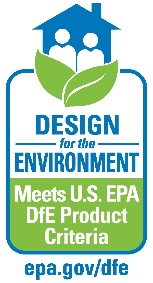
On a scale from 1 to 5, where 1 indicates that you “strongly disagree,” and 5 indicates that you “strongly agree,” please indicate how much you agree or disagree with each of the following statements.
|
|
Strongly Disagree 1 |
Somewhat Disagree 2 |
Neutral - don’t agree or disagree 3 |
Somewhat Agree 4 |
Strongly Agree 5 |
1 |
I buy disinfectant products on a regular basis (at least once every three months) |
|
|
|
|
|
2 |
The ecolabel is effective in showing that the product contains ingredients that have been reviewed by EPA and meet EPA’s stringent standards for human health |
|
|
|
|
|
3 |
The ecolabel is effective in showing that the product contains ingredients that have been reviewed by EPA and meet EPA’s stringent standards for environmental effects |
|
|
|
|
|
4 |
I would notice this ecolabel if I saw it on a product or packaging |
|
|
|
|
|
5 |
The ecolabel is attractive and appealing |
|
|
|
|
|
6 |
The tagline Meets U.S. EPA DfE Product Criteria is credible |
|
|
|
|
|
7 |
This ecolabel is a useful resource for shoppers |
|
|
|
|
|
8 |
I would use this ecolabel to help me decide which product to buy |
|
|
|
|
|
Below is a label that EPA allows to be used on certified cleaning products other than disinfectants that have chemical ingredients that meet stringent criteria for human health and environmental effects.
S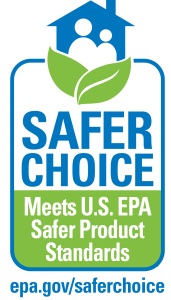
afer
Choice Label
Considering both ecolabels (DfE and Safer Choice), please answer the following questions. (show images of both labels)
How would you describe these ecolabels?
The same
Similar
Different
These two ecolabels are similar but distinct.
True
False
If you were in the store or online shopping for household goods, do you think you would be able to tell the difference between these two ecolabels?
Yes
No
What message do you think EPA is trying to convey about products with the DfE ecolabel?
What message do you think EPA is trying to convey about products with the Safer Choice ecolabel?
EPA Form Number 9600-022
Page
| File Type | application/vnd.openxmlformats-officedocument.wordprocessingml.document |
| Author | Angela Hofmann |
| File Modified | 0000-00-00 |
| File Created | 2024-10-29 |
© 2025 OMB.report | Privacy Policy